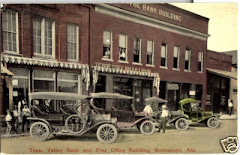The Continuing Saga of Court Referral - Protest on The Square - Family Hardships -Alleged Procedural Failures Relating to Urine Collection for Testing
(photos by G. Morgan)
All articles regarding this issue: https://arklite.blogspot.com/search/label/Jackson%20County%20Community%20Corrections%20and%20Court%20Referral
Family members of Court Referral clients tell stories of hardship to Jackson County Sentinel Reporter Will Whaley (Photo by G. Morgan)
Family members 'Protest signs' claim Court Referral places extreme hardships on families, forcing some into homelessness and going without food. (Photo by G. Morgan)
One lady related that a person had been placed on color code drug testing because a poor citizen did not have the money to pay for garbage collection in the county.
Allegations were made that Court Referral personnel had solicited for a "special treatment program" where clients would be placed into the program on Lookout Mountain when Court Referral personnel would be paid $1500.00. Allegations were also made regarding failed procedural/legal requirements in the security of urine specimen collection, transport and testing.
Hardships include being placed into extreme indebtedness, claims family members assisting in paying relatives fines. (Photo by G. Morgan)
VIDEO INTERVIEWS
One of my Facebook friends, Kim Rice, ask me what do I think is the perfect solution to problems at CR/CC, Court Referral Community Corrections, below is my answer and my reply to her question on Facebook.
Thanks for asking Kim. A comprehensive Medical Treatment program with long term follow ups is a solution to substance abuse treatment. Perfect solution to a government structured program such as we have locally is not possible; however, there are solutions and programs in conjunction with courts and medical treatment that is better than the current local program.
1) Abolish the non-profit program, the current non-profit status is being abused to hide disclosures which would normally be available under a government sponsored program. Another solution would be to keep the non-profit program but actively recruit funders to provide 90-120 day inpatient treatment with a yearlong follow-up outpatient program. Cost share program - The substance abusers are currently paying for their testing, once released from inpatient care, which should continue.Government agencies, pharmaceutical, alcohol manufacturers and distributors should contribute to funding programs. So should a portion of law enforcement seizures.
2) Follow standards of lawand commonly accepted national protocols and procedures regarding treatment and legal standards described within this link: https://www.drugabuse.gov/publications/principles-drug-abuse-treatment-criminal-justice-populations/principles Note Principle #3, minimum 90 day inpatient treatment which must have an extended outpatient treatment period, to be effective, normally 1 year.
3) Currently, our current drug testing programs available to CR/CC do not meet Federal Standards. Other words, the current local standards within the Jackson County Courts System do not meet the standards of employment law or DOT testing standards. The folks who fail drug testing may be incarcerated by a legal standard less than employment law or the standard lower than a Commercial Truck Driver drug test. That is wrong. Guidelines may be found at the Substance Abuse and Mental Health Services Administration (SAMHSA); there are no SAMHSA certified labs in the state of Alabama. https://www.samhsa.gov/workplace/drug-testing
The problem with what I am saying is money, money and more money. The current CR program diverts money from clients into the hands of attorneys, court system, managers of the CR/CC non-profit System. More money must be placed into treating the problem
medically long term, not enriching program managers, attorneys (which are not patient care providers), drug dealers and government War on Drug Agencies which have proven ineffective. Note this, what kind of medical treatment and follow-up could have been provided with the Trillion Dollars spent on the War on Drugs? Note 1) above.






























